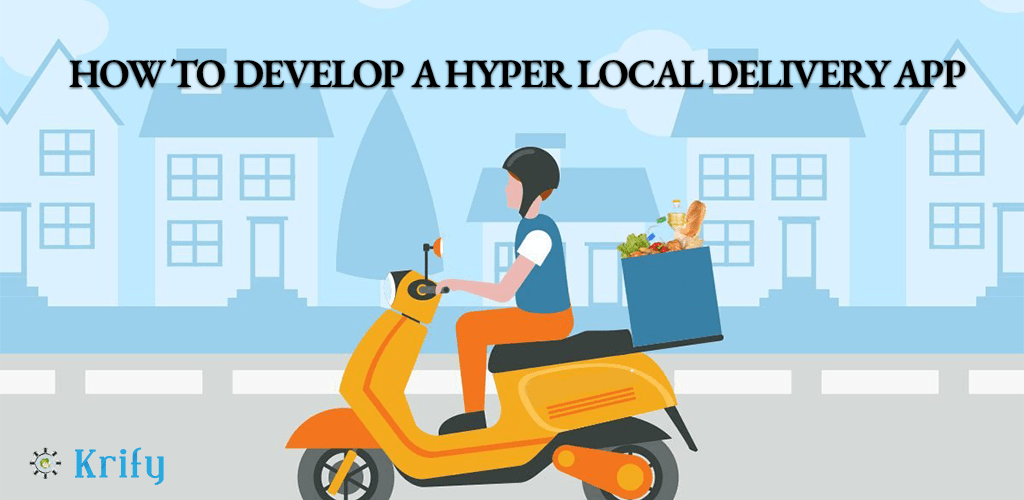Business is a term that humanity has been acquainted with since the beginning of early civilization. In this time, several variations and developments have arisen over the years, and now there is more than one form of the business sector. The hyperlocal market, which retains the localized, community-based company active and alive, is one such market. If you’re interested in exploring this thriving sector, understanding How To Develop A Hyper Local Delivery App can be a valuable step towards harnessing its potential.
A limited area or rather particular demography is referred to by the word ‘hyperlocal.’ The hyperlocal delivery model is described as a business model in which the service provider acquires the product(s) demanded locally and delivers it to the customer in the same geographical area. To develop a hyperlocal delivery app will help the business to target localized people or locations. Thus providing the services within a particular range is the exact meaning of developing an app for hyperlocal.
Let us now understand the steps required to develop a hyperlocal delivery app.
Step to Develop a Hyperlocal Delivery App:
We know a hyperlocal delivery model as an online business model that fulfills customers’ on-demand requirements through local offline shops via a digital platform. To start developing this distribution app, you need to consider a few important steps, such as:
-
Select your niche:
There are many goods and items needed in daily necessities, you need to select the products that you want to deliver, which can be dietary food, daily grocery, or packaged food. There are several variations, you just have to define the demand and resources available to choose from around you.
-
Select the target audiences:
For any product, there is an audience, and this is where you need to concentrate. According to the service you offer the audience should be targeted. For example, if you offer food service then you should target busy professionals who are searching for gourmet food or hungry office-goers/students living away from their families and love to serve their hunger pangs late at night. -
Build a partnership:
The next big thing on your plate after selecting the niche and audience type is to create a relationship. Arranging partnerships with local agencies for home delivery and collaborating with nearby merchants can streamline the process. This can be a direct collaboration where you work as an aggregator of local grocery stores with your partners. Once you have enough delivery orders, then you can partner with local stores, to receive a commission, the delivery executive of local stores can conduct the delivery doorstep for customers here and eliminate the clutter of delays.
-
Create a revenue model:
When you partner with local stores, every time you buy their products, they pay you a commission. But you need to limit yourself to a single merchant within a particular locality in this form of the model. In another business model, the consumer can charge a convenience fee for the delivery fees. Achieving this can involve scaling up even further, offering specialized suggestions, or bundling services for added value.
-
Have a hyperlocal delivery app:
Once you’ve sorted the above steps, the next big task is to develop a hyperlocal mobile app with various portals, including drivers, merchants, and customers. While developing a hyperlocal delivery app, it is important to include the below features.
Features to develop an app for Hyperlocal:
-
GPS-Location:
GPS can support and play a key role in contacting local service providers and vice versa with customers.
-
Login and sign-up:
In any app panel, this is the most basic and common feature. You can make the login process as simple as possible and also provide them with an option to register via social media credentials.
-
Filter based on location:
This feature allows clients to access the products and services around their exact GPS location.
-
Store/Service, Provider/Seller Selection:
In this feature, customers get the option to first pick the store or seller and specifically display the products/services provided.
-
Delivery slot selection:
This is somewhat similar to Amazon, where consumers have the option to select the slot for delivery according to their convenience.
-
Fast Shipping Method:
Customers can have their goods delivered quickly with this feature, and they can choose different transport/logistics types, along with the option of date and time. Customers need to pay an additional surcharge to take advantage of this service.
-
Seller dashboard panel:
The dashboard is an information management tool for tracking various sources of data since it offers a central place for performance reporting and analysis for business.
The seller dashboard must feature New Seller, Orders, Product Management, and Analytics for efficient product organization and audience understanding. -
Customer panel:
Customer panel should feature Live Chat, Push Notifications, Order History, Payment Methods, Order Tracking, Reviews & Ratings for detailed product insight.
Conclusion:
Developing a hyperlocal delivery app will help the service provider to acquire the product’s demands locally and deliver it to the customer in the same geographical area. It is the perfect way for local consumers to meet. Consulting an expert to develop a hyperlocal delivery app, will help you to have the best Hyperlocal delivery app.
At Krify we have the best developers for the hyperlocal delivery app who are skilled in trending technology and implement their expertise in developing powerful mobile and web applications in compliance with the criteria expressed by customers. If you are looking for a Hyperlocal delivery app development company in India, you landed on the right page. For more information, Contact us.
Similar Blogs




